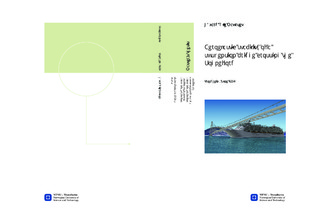| dc.contributor.advisor | Øiseth, Ole Andre | nb_NO |
| dc.contributor.advisor | berntsen, Kristian | nb_NO |
| dc.contributor.advisor | Rönnquist, Anders | nb_NO |
| dc.contributor.advisor | Sigbjörnsson, Ragnar | nb_NO |
| dc.contributor.author | Røe Maurset, Håvard | nb_NO |
| dc.date.accessioned | 2014-12-19T12:01:25Z | |
| dc.date.available | 2014-12-19T12:01:25Z | |
| dc.date.created | 2012-11-08 | nb_NO |
| dc.date.issued | 2012 | nb_NO |
| dc.identifier | 566298 | nb_NO |
| dc.identifier | ntnudaim:7663 | nb_NO |
| dc.identifier.uri | http://hdl.handle.net/11250/237092 | |
| dc.description.abstract | This thesis discusses the possibility of constructing a suspension bridge crossing the Sognefjord in light of the aeroelastic stability. A preliminary design has been carried out and a finite element model created in order to extract natural frequencies and mode shapes. The stability limit has been assessed by the use of a multimodal approach and a simplified solution using well-known flutter equations. The multimodal eigenvalue solution shows that the shape-wise similarity is a clear indicator of which modes contributing most to the stability limit, when the governing instability is multimodal flutter. Multimodal effects have also shown to have both a stabilizing and destabilizing effect, and are related to the shape-wise similarity. In this thesis the stability limit is assessed using different cross sectional configurations. It is concluded that central barriers and guide vanes provides critical velocities well above the design critical velocity. It is also shown that the stability limit increases significantly when increasing the distance between the girders. One configuration has shown a static instability phenomenon called static divergence. It is found that one torsional mode contributes significantly to this instability, but where other torsional modes also contribute. In this thesis the aerodynamics of the different cross sectional configurations are accounted for by modelling the self-exited forces with the use of aerodynamic derivatives. Uncertainties in curve fitting have been discussed, and it is concluded that in the vicinity of the critical design velocity the chosen polynomials can be used with adequate accuracy. From this it has been concluded that any instability below the critical design velocity are of no concern for the tested configurations.In this thesis well-known flutter equations are used to assess the flutter stability limit as a function of the shape-wise similarity and the frequency ratio and results show that a high shape-wise similarity combined with a low frequency ratio gives the lowest critical velocity. The flutter solution has also been compared to the multimode solution and it is concluded that the flutter solution provides an engineering approximation of the flutter stability by providing conservative results. | nb_NO |
| dc.language | eng | nb_NO |
| dc.publisher | Institutt for konstruksjonsteknikk | nb_NO |
| dc.subject | ntnudaim:7663 | no_NO |
| dc.subject | MTBYGG Bygg- og miljøteknikk | no_NO |
| dc.subject | Beregningsmekanikk | no_NO |
| dc.title | Aeroelastic stability of a suspension bridge crossing the Sognefjord | nb_NO |
| dc.type | Master thesis | nb_NO |
| dc.source.pagenumber | 164 | nb_NO |
| dc.contributor.department | Norges teknisk-naturvitenskapelige universitet, Fakultet for ingeniørvitenskap og teknologi, Institutt for konstruksjonsteknikk | nb_NO |

